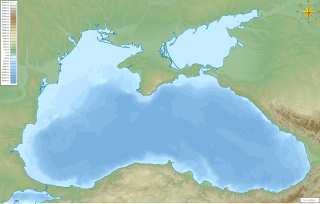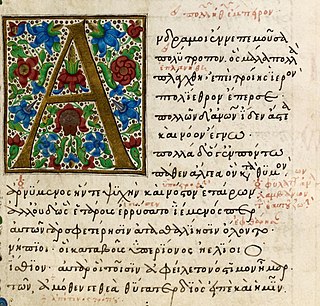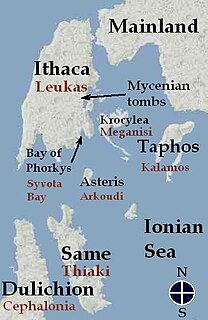Details of the theory
According to Vinci, the Achaeans would have lived at the beginning of the 2nd millennium BC on the coasts of the Baltic Sea and, towards the middle of the millennium, since the climate had become harder, they would have moved southward along the Dnepr, reaching the Black Sea and the Aegean Sea. The newcomers would have founded the Mycenaean cities (the most ancient Mycenaean graves are rich in amber, a typical Baltic product, whereas the latest ones are not) and would have named them with the names of their previous settlements in Scandinavia, although not exactly in correspondence of their location, because of the physical differences between the two areas.

The Achaeans constitute one of the collective names for the Greeks in Homer's Iliad and Odyssey. The other common names are Danaans and Argives while Panhellenes and Hellenes both appear only once; all of the aforementioned terms were used synonymously to denote a common Greek civilizational identity. In the historical period, the Achaeans were the inhabitants of the region of Achaea, a region in the north-central part of the Peloponnese. The city-states of this region later formed a confederation known as the Achaean League, which was influential during the 3rd and 2nd centuries BC.

The Black Sea is a body of water and marginal sea of the Atlantic Ocean between Eastern Europe, the Caucasus, and Western Asia. It is supplied by a number of major rivers, such as the Danube, Dnieper, Southern Bug, Dniester, Don, and the Rioni. Areas of many countries drain into the Black Sea, including Germany, Russia, Turkey and Ukraine.

The Aegean Sea is an elongated embayment of the Mediterranean Sea located between the Greek and Anatolian peninsulas. The sea has an area of some 215,000 square kilometres. In the north, the Aegean is connected to the Marmara Sea and the Black Sea by the straits of the Dardanelles and Bosphorus. The Aegean Islands are located within the sea and some bound it on its southern periphery, including Crete and Rhodes. The sea reaches a maximum depth of 3,544 meters, to the east of Crete.
During their migration, they would have brought with themselves their traditional oral tales, which were poetic sagas set in their original homeland. Therefore, the Trojan war would not have taken place around the 13th century BC, as it is normally thought, but around the 18th century BC. Then the poems would have been transcribed later, after 800 or 900 years of oral tradition. [1]
In support of the theory, it is important to remember that the Mycenaeans are not considered an aboriginal population, but are thought instead to have come to Greece around the 16th century BC. [2] Felice Vinci also reports the hypothesis formulated in the late 19th century by the Indian expert Bal Gangadhar Tilak, according to whom Indoeuropean populations would have lived around the Arctic Circle in the past. On the other hand, the so-called 'Linear B' documents appear to have been written in a language which was a precursor of what later became Greek.

Bal Gangadhar Tilak, born as Keshav Gangadhar Tilak, was an Indian nationalist, teacher, and an independence activist. He was one third of the Lal Bal Pal triumvirate. Tilak was the first leader of the Indian Independence Movement. The British colonial authorities called him "The father of the Indian unrest." He was also conferred with the title of "Lokmanya", which means "accepted by the people ".

The Arctic Circle is one of the two polar circles and the most northerly of the five major circles of latitude as shown on maps of Earth. It marks the northernmost point at which the centre of the noon sun is just visible on the December solstice and the southernmost point at which the centre of the midnight sun is just visible on the June solstice. The region north of this circle is known as the Arctic, and the zone just to the south is called the Northern Temperate Zone.
The main topic of Vinci's hypothesis is the incongruence between the geography described by Homer and the conformation of the Mediterranean lands, already noticed by Strabo. [3] The geographical descriptions provided by the Iliad and the Odyssey, on the contrary, perfectly adapts itself to Northern Europe, and the incongruity regarding the Mediterranean localities would be due to the application of the old Scandinavian names they were subject of. Also, the description Homer gives of climate would be more suitable for the Baltic regions. [4]

Homer is the legendary author of the Iliad and the Odyssey, two epic poems that are the central works of ancient Greek literature. The Iliad is set during the Trojan War, the ten-year siege of the city of Troy by a coalition of Greek kingdoms. It focuses on a quarrel between King Agamemnon and the warrior Achilles lasting a few weeks during the last year of the war. The Odyssey focuses on the ten-year journey home of Odysseus, king of Ithaca, after the fall of Troy. Many accounts of Homer's life circulated in classical antiquity, the most widespread being that he was a blind bard from Ionia, a region of central coastal Anatolia in present-day Turkey. Modern scholars consider these accounts legendary.

Strabo was a Greek geographer, philosopher, and historian who lived in Asia Minor during the transitional period of the Roman Republic into the Roman Empire.
Identification of Iliad's Homeric places
Among the suggested identifications, Ithaca would coincide with the isle of Lyø, in the Danish archipelago of South Funen: the shape and the position of this island is reflected in the Homeric description as the most western of the archipelago (whereas the present Ithaca has a different location among the Ionian Islands). Vinci goes as far as to identify an ancient dolmen, present on the Danish isle and known as Klokkesten (the "bell stone"), with the "crow stone" described in the Odyssey, near the home of Eumaeus, the swineherd. The South Funen Archipelago is made up of four bigger islands, as in Homer: Dulichium corresponds with the Danish Langeland, Cephalonia with Ærø and Zakynthos with Tåsinge. The book also highlights how Dulichium has never been identified in the Mediterranean. [5]
Thebes, in Boeotia, would correspond with the Swedish town of Täby, not far from Stockholm. There is also a town nearby called Tyresö, whose name could concern the blind prophet Tiresias, who was active in Thebes. [6]
Troy would correspond with Toija, in Southern Finland, near Turku. According to Vinci, the ancient Troy used to rise on the top of a hill, surrounded by two rivers (Simoeis and Scamander which join in the plain below, today flooded, a few kilometers from the sea. This hypothesis would be confirmed by the finding of Bronze Age ruins in the area.
The Hellespont, which is said to be "wide", could not be identified with the long and narrow Dardanelles strait, but with the Gulf of Finland. [7] Vinci also quotes the Danish chronicles written by the medieval historian Saxo Grammaticus, which remind the Hellespontinians (a population inimical to the Danish) and the Roman name of Finland, Aeningia (whose meaning might be "Aeneas' land")
The Achaeans' settlements are identified on the basis of the Catalogue of Ships, in the second book of the Iliad: Micenae would have stood in the same place as modern Copenhagen and Phthia in Estonia. The Peloponnese would be recognizable in the isle of Sjælland, which is completely flat: this would be the reason why Telemachus goes from Pylus to Sparta by land and not by sea. On the contrary, the Greek Peloponnese is neither flat nor an island. [8]
Identification of Odyssey's Homeric places
According to Vinci, Ulysses' journey would have taken place along the coasts of Norway. [9] After being held back in Ogygia (identified with one of the Faroe Islands, following Plutarch's passage mentioned above [10] ), the Odyssey relates that, after seventeen days on the sea, Ulysses reached Scheria, home of the Phaiakians, described as a high rocky coast and densely wooded: this region, impossible to locate in the Mediterranean area, could be instead identified with the environs of Bergen, at the mouth of river Figgjo, where several Bronze Age objects have been found (Scheria is never mentioned in the Odyssey as an island). The new position would explain why Ulysses had noticed that the sea used to flow back into the river: this phenomenon is due to ocean tides and does not occur in the Mediterranean. Other places visited by Ulysses could be located on the Norwegian coasts, too: Circe's island, Aeaea, and the places she describes (the Sirens, Scylla and Charybdis) may be placed in the Lofoten archipelago, where tides on the ebb create the so-called maelstrom, corresponding with the Scylla whirlpool which swallowed up Ulysses' ship and is described as forming three times a day, just like the maelstrom. In the end, Aeolus's island would be located somewhere in the Shetland archipelago, where winds exceeding 200 km/h often blow. [11]
Other myths
According to Vinci, other Greek mythological tales are set in the same region. Among these, the Argonauts' journey, who are said to have reached Colchis sailing eastwards and arriving then at Aeaea, from where they came back to Greece going westwards. The identification of Colchis in the Black Sea and of Aeaea in the Tyrrhenian Sea would force to hypothesize for the Argonauts an improbable itinerary by ship in Continental Europe, along the rivers Danube, Po and Rhone. The navigation would be instead the memory of an ancient counter-clockwise circumnavigation of Scandinavia starting from the Baltic Sea, crossing Lapponia overland along the rivers which run through it and reaching Lofoten, where Aeaea had been identified. According to what Circe tells Ulysses, Argonauts chose for their journey home the course passing through the Wanderers Rocks, which are to be identified with the narrow straits covered by the streams between the islands and the mainland.
Another reference to an ancient Nordic setting can be found, according to Vinci, in an assertion by Plato in his dialogue Critias, where the philosopher reminds that Athens used to rise formerly in a flat fertile zone, not harsh and mountainous: this particular is presented in the book as a reference to the ancient Baltic Athens, which might be located near the town of Karlskrona (in the surroundings there is another little town, named Lyckeby, whose name might remind the Mount Lycabettus). [12]
Climate in Homeric poems
The climate described by Homer is cold and stormy: mist and wind often appear and storms are heavy. The characters are often covered with thick cloaks and are never described as sweating because of the heat. Although in the period normally chosen to date the Trojan War (8th century BC) the average temperature was lower than it is nowadays, the Homeric weather conditions are difficult to adapt to the Aegean area, especially considering that the events are likely to be happened in summer. According to Vinci, instead, this descriptions would be perfect for the Baltic regions in the 18th century BC (which would be the real period of the Trojan War) when temperatures in Northern Europe were by far higher than now: the drop in temperatures at a later time would have forced Achaeans to emigrate southwards. [13]
Some passages of the Iliad and the Odyssey have been interpreted by Vinci as a description of typical Nordic phenomena. For instance, in the great battle between Achaeans and Trojans, linchpin of Iliad's central books, the time of noon is quoted at two different moments: in the author's opinion, this wouldn't be a mistake: the battle would have simply continued for two consecutive days, thanks to the midnight sun, which let the warriors carry on fighting. Other references to this phenomenon are the exceptional duration of the day among the Laestrygonians and Ulysses' uncertainty when trying to find his way to Aeaea, since he cannot figure out where the sun rises and where it sets.
Cultural similarities
Both in Homeric poems and among the Vikings it is possible to find similar features regarding traditions, mythology and literature. According to Vinci, these might have survived even in such a long period of time (more than 2.000 years). The author reminds the custom of assembling for a meeting, the majestic convivial banquets, the kind of exile imposed to those guilty of unintentional homicide. In addition, the Achaean ships would have in common with the Viking ones the dismountable mast, considered useful especially in the Northern seas to avoid the formation of ice, and the double bow, which allowed oarsmen to travel backwards (a reference to this aspect might be the Greek term ἀμφιέλισσαι, "curved on both sides", frequently used by Homer; the same feature is described by Tacitus concerning the Germans.
Moreover, in the author's opinion, the Greek aoidos would be similar to the Old Norse skald, as Homer would often make use of a figure of speech known as kenning in Nordic literature.
Also, some mythological figures would be similar in the two cultures (for example, Ulysses to the archer Ull in an Icelandic saga and to Hamlet, main character of an ancient Danish legend reported in Saxo Grammaticus' Gesta Danorum ), as well as many divinities: Aphrodite corresponds with Freyja, Ares with Thor, Zeus with Wotan and the Keres (who come down on the battlefield to take the souls of dead warriors, with the Valkyries).






















